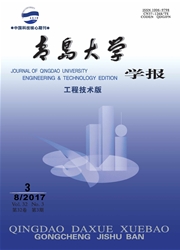

 中文摘要:
中文摘要:
针对雷达、声纳和通信等领域中频段信号经常受窄带噪声污染的问题,本文采用随机共振理论,对窄带噪声环境下的弱信号检测及其随机共振现象进行研究.在圆对称概率密度的窄带非高斯噪声环境下,建立了窄带弱信号观测模型,并对局部最优检测器、广义窄带相关检测器和硬限幅窄带相关检测器中的随机共振现象的存在性进行分析与仿真,同时对给定次优系统中的随机共振性能与自适应次优系统最佳性能进行比较.研究结果表明,噪声与检测器结构参数都可视为影响检测器性能的重要因素,在局部最优检测器中不存在随机共振现象;在广义相关检测器中,广义瑞利噪声环境下的次优系统中存在随机共振现象;在硬限幅窄带相关检测器中,非尺度噪声如莱斯噪声环境下也证实了随机共振现象.该研究为提高雷达和通信领域的信号检测性能提供了理论依据.
 英文摘要:
英文摘要:
It is known that operating signals in such areas as radar, sonar, communication are frequently corrupted by narrowband noise. This paper studies the narrowband weak signal detection theory and the phenomenon of stochastic resonance. For circularly symmetric bivariate noise distributions, this paper de- duces the structure of the narrowband locally optimum detection and the generalized narrowband correlator detection. We demonstrate the occurrence of stochastic resonance effect in generalized correlator detectors, and compare the performances of detectors achieved by the method of stochastic resonance and the parame- ter optimization. The results show that both the noise type and level, acting as the tuning detector param- eters, can enhance the performances of detectors, which indicates the potential applications of stochastic resonance in such areas as radar and communication.
 同期刊论文项目
同期刊论文项目
 同项目期刊论文
同项目期刊论文
 期刊信息
期刊信息
